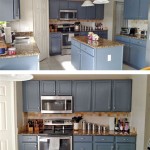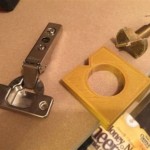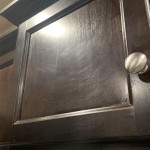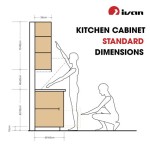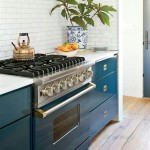How to Paint Kitchen Cabinets White Without Brush Strokes
Achieving a flawless finish when painting kitchen cabinets white can be challenging, especially if you want to avoid visible brush strokes. However, with the right techniques and preparation, you can create a professional-looking painted finish that will transform your kitchen. Here's a comprehensive guide to help you paint your kitchen cabinets white without brush strokes:
1. Prepare the Cabinets
Thoroughly clean the cabinets to remove any grease, dirt, or dust. Use a degreasing cleanser and a sponge or brush to scrub the surfaces. Rinse with clean water and allow them to dry completely. Remove all hardware, such as knobs, handles, and hinges.
Sand the cabinets lightly using a fine-grit sandpaper to create a smooth surface. Remove any sanding dust with a tack cloth or a damp rag.
2. Prime the Cabinets
Apply a coat of high-quality primer to the cabinets. Use a primer that is specifically designed for kitchen cabinets. Allow the primer to dry completely before proceeding.
Priming helps create a smooth base for the paint and prevents the wood from absorbing too much paint, which can lead to brush strokes.
3. Choose the Right Paint and Brush
Select a high-quality cabinet paint in a white finish. Use a brush that is specifically designed for painting kitchen cabinets. A brush with soft, synthetic bristles will help minimize brush strokes.
Consider using a foam roller for large, flat surfaces, such as cabinet doors and drawer fronts. Foam rollers provide a smoother finish than brushes.
4. Paint in Thin Coats
Apply the paint in thin, even coats. Avoid overbrushing or applying too much paint at once. Use long, smooth strokes and overlap each stroke slightly.
Allow each coat to dry completely before applying the next. This will help prevent brush strokes from forming.
5. Sand and Finish
Once the paint has dried completely, lightly sand the cabinets with fine-grit sandpaper to remove any imperfections. Wipe away the sanding dust with a tack cloth.
Apply a topcoat of polyurethane to the cabinets to protect the finish. Allow the topcoat to dry according to the manufacturer's instructions.
Tips for Minimizing Brush Strokes
* Use a high-quality primer and paint. * Apply the paint in thin coats. * Use long, smooth strokes and overlap each stroke slightly. * Allow each coat to dry completely before applying the next. * Sand between coats to remove any imperfections. * Apply a topcoat of polyurethane to protect the finish.
How To Paint Kitchen Cabinets Without Brush Marks Certapro Painters

How To Paint Kitchen Cabinets Without Brush Marks Dengarden

How To Paint Kitchen Cabinets Without Brush Marks Certapro Painters

How To Paint Kitchen Cabinets White Let S Furniture

How To Paint Your Kitchen Cabinets Tips Tricks For A Smooth Finish

How To Paint Kitchen Cabinets White In 5 Days For 150 The Nutritionist Reviews

What You Need To Know Before Painting Cabinets The Palette Muse

How To Paint Kitchen Cabinets Without Brush Marks Certapro Painters Of Grand Rapids

The Easy Way To Paint Kitchen Cabinets No Sanding Building Bluebird

How To Paint Your Kitchen Cabinets Without Losing Mind The Kim Six Fix
Related Posts


